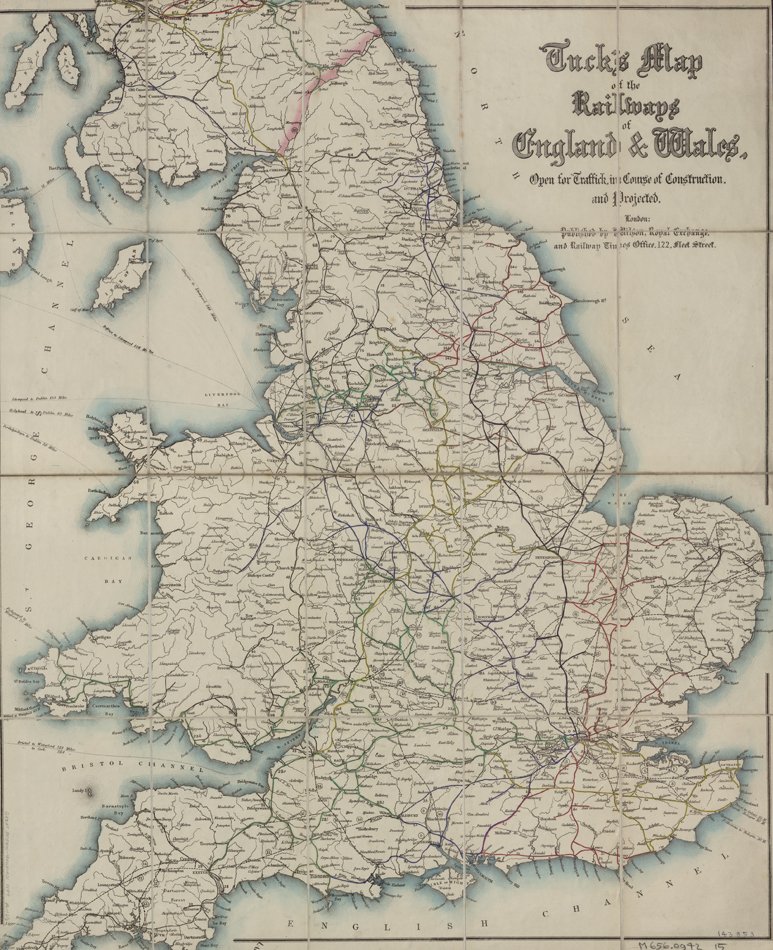Victorians
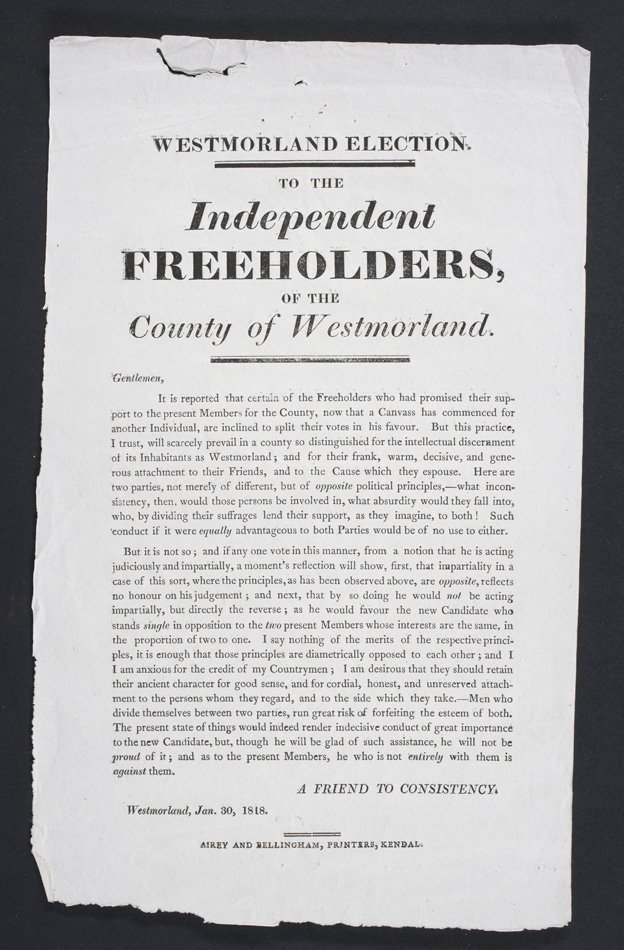
[William Wordsworth (1770-1850)]
Kendal: Airey and Bellingham, printers, [1818]
On Loan from Deborah Wachs Barnes, Sharon Wachs Hirsch, Judith Pieprz, and Joel Wachs, AB’92
An early Wordsworth work, signed at the end, "A Friend to Consistency," and dated January 30, 1818. This was Wordsworth's first contribution to the debate surrounding the election in Westmorland. This broadside dealt specifically with the question of electors splitting, or "plumping," their votes. Wordsworth argued that this would be self-contradictory, and dishonorable, as the two parties were "not merely different, but of opposite political principles."
Wachs No. 699

[William Wordsworth (1770-1850)]
Kendal: Printed by R. Branthwaite and Son, [1845]
On loan from Deborah Wachs Barnes, Sharon Wachs Hirsch, Judith Pieprz, and Joel Wachs, AB’92
This pamphlet begins with Wordsworth's sonnet of protest, "On the Projected Kendal and Windermere Railway," which begins: "Is then no nook of English ground secure/ From rash assault?" The sonnet is dated from Rydal Mount, October 12, 1844 and it had already appeared in The Morning Post on October 16, where it was accompanied by a brief letter which is reproduced here as a footnote. Towards the end of the letter are two sonnets; in the first of these, "Steamboats and Railways," first published in 1837, Wordsworth attempts to show "how far I am from undervaluing the benefit to be expected from railways in the legitimate application." This was an early literary response to the clash between the progress of technology, and the need to preserve the landscape and environment.
Wachs No. 850

Alfred, Lord Tennyson (1809-1892)
[Coventry: Charles Newsome, ribbon manufacturer, 1862]
Gift of Deborah Wachs Barnes, Sharon Wachs Hirsch, Judith Pieprz, and Joel Wachs, AB’92
The first separate edition of the poem written by Tennyson in his capacity as poet laureate for the opening of the International Exhibition held at the Crystal Palace in 1862. This handsome silk ribbon was also intended for the Exhibition. The designer was Edwin Rollason, then aged 27, and it was produced by Charles Newsome, a ribbon manufacturer of Coventry, whose monogram ("C. N.") appears in white and gold at the top; beneath the 41-line poem.Wachs No. 791
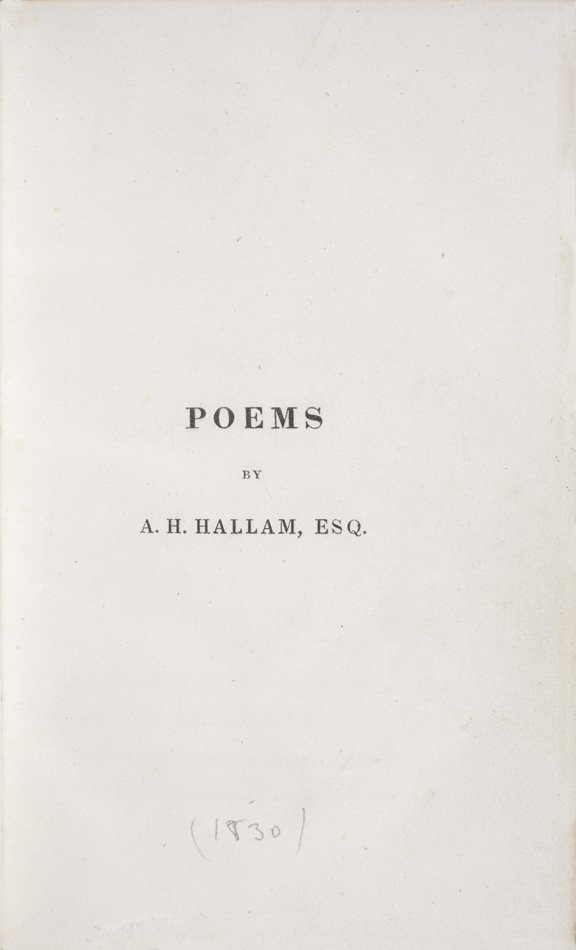
Arthur Henry Hallam (1811-1833)
[London: s.n., 1830]
On loan from Deborah Wachs Barnes, Sharon Wachs Hirsch, Judith Pieprz, and Joel Wachs, AB’92
Privately printed, without a proper title-page, the first leaf is a kind of fly-title, reading simply "Poems by A. H. Hallam, Esq." This collection of poems was intended to form part of a joint publication with Tennyson, but at the last minute, with the poems set in type and the preface written, Hallam's father raised objections and the venture was abandoned. Tennyson then issued his own poems as Poems, Chiefly Lyrical.
Wachs No. 872

Elizabeth Barrett Browning (1806-1861)
London: Edward Moxon, 1844. 2 vols.
On Loan from Deborah Wachs Barnes, Sharon Wachs Hirsch, Judith Pieprz, and Joel Wachs, AB’92
This presentation copy was inscribed on the verso of the flyleaf facing the title-page, "With the author's love to Miss Biddulph, London, August, 1844." The recipient was one of five daughters of a country gentleman whose Herefordshire estate was adjacent to Hope End, the home of Elizabeth Barrett's family from 1809 until they moved to Wimpole Street in London.
Wachs No. 748
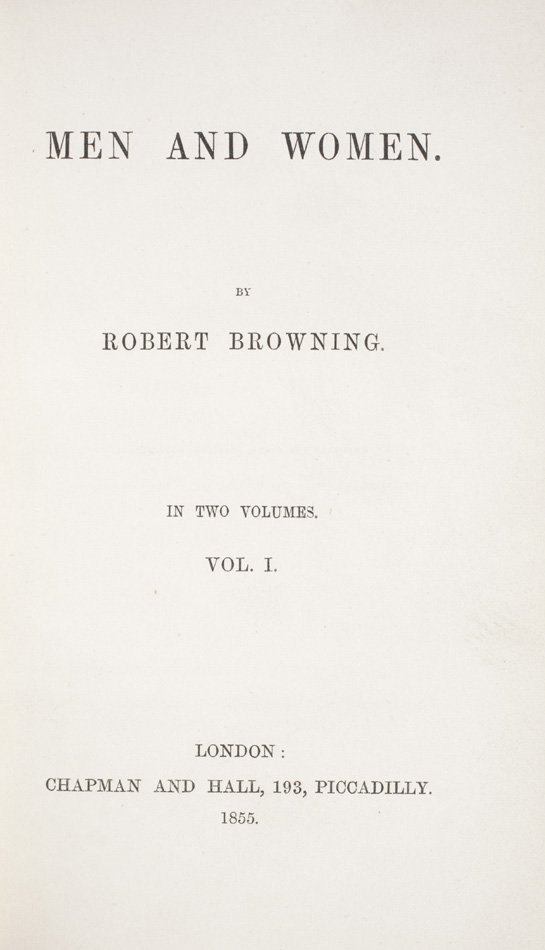
Robert Browning (1812-1889)
London: Chapman and Hall, 1855
Gift of Deborah Wachs Barnes, Sharon Wachs Hirsch, Judith Pieprz, and Joel Wachs, AB’92
Both volumes are signed on the front flyleaf by E. L. Lushington. Edward Law Lushington (1811-1893) entered Trinity College, Cambridge, in 1828. He was two years younger than Alfred Tennyson, and with him, along with Arthur Hallam, was a member of the select club of twelve called the Apostles. In 1842 he married Tennyson's sister Cecilia. The marriage was celebrated by Tennyson in the epilogue to In Memoriam.
Wachs No. 165

Alfred, Lord Tennyson (1809-1892)]
London: Edward Moxon, 1850
Gift of Deborah Wachs Barnes, Sharon Wachs Hirsch, Judith Pieprz, and Joel Wachs, AB’92
This volume was written by Tennyson in memory of his close friend Arthur Hallam, who died prematurely in 1833, at the age of twenty-two.
Wachs No.89
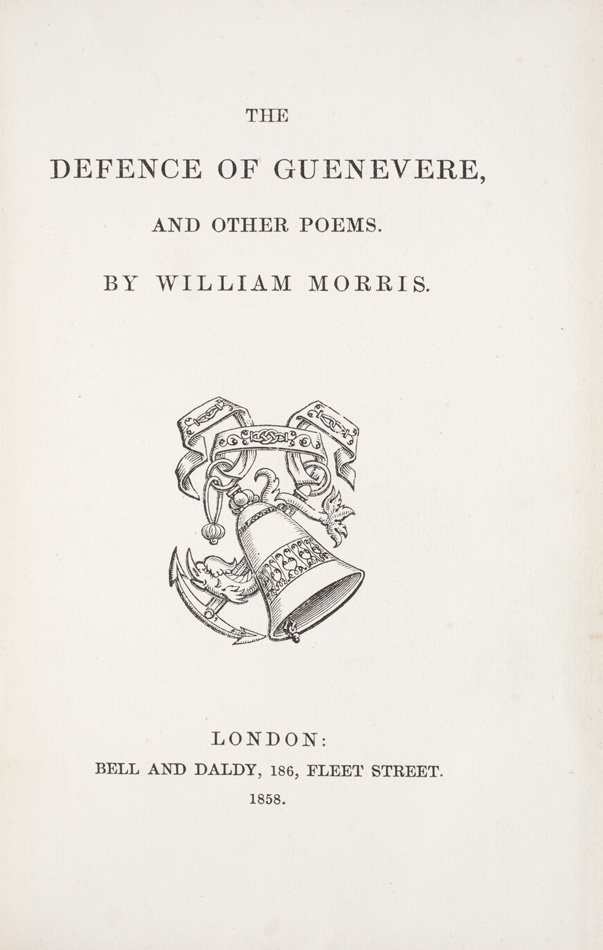
William Morris (1834-1896)
London: Bell and Daldy, 1858
On Loan from Deborah Wachs Barnes, Sharon Wachs Hirsch, Judith Pieprz, and Joel Wachs, AB’92
The author's first book, dedicated to his friend Dante Gabriel Rossetti. A presentation copy, it was inscribed by Morris to his friend George Francis Campfield. Campfield was a pupil of Ruskin at the Working Men's College, and an employee of Morris, Faulkner, Marshall & Co., a firm jointly created by Morris, Ford Madox Brown, Edward Burne-Jones, Charles Faulkner, Dante Gabriel Rossetti, P. P. Marshall, and Philip Webb, to create and sell handcrafted objects for the home.
Wachs No. 97
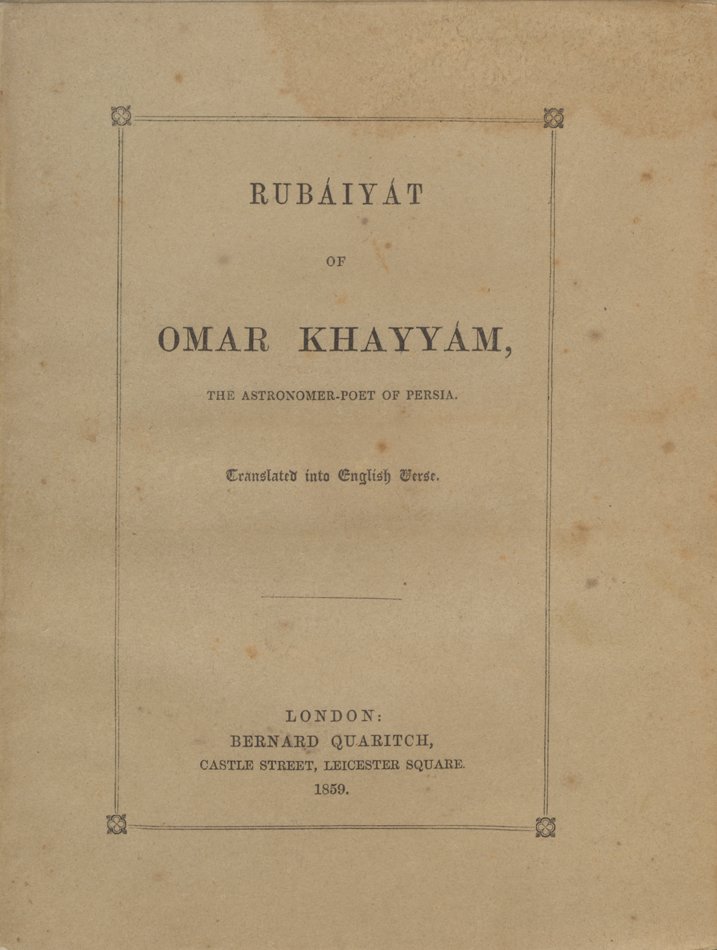
[Edward FitzGerald (1809-1883)]
London: Bernard Quaritch, 1859
On Loan from Deborah Wachs Barnes, Sharon Wachs Hirsch, Judith Pieprz, and Joel Wachs, AB’92
Published anonymously in an edition of 250 copies, the poem did not sell well at first, and some copies were remaindered, and others destroyed. FitzGerald was not publicly identified as the author of this poem until his name appeared in a Quaritch advertisement in 1875 and he was upset at the disclosure.
Wachs No. 818
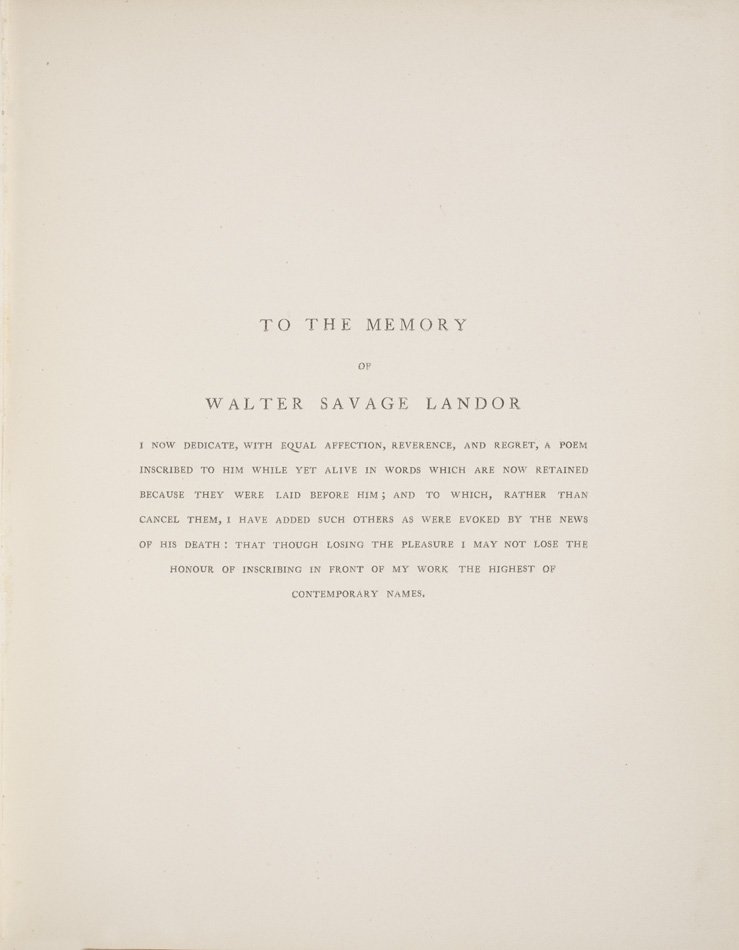
Algernon Charles Swinburne (1837-1909)
London: Edward Moxon and Co., 1865
Gift of Deborah Wachs Barnes, Sharon Wachs Hirsch, Judith Pieprz, and Joel Wachs, AB’92
The covers were designed by Dante Gabriel Rossetti. There are two states of this book. This copy is the second state, with last-minute corrections.
Wachs No. 213
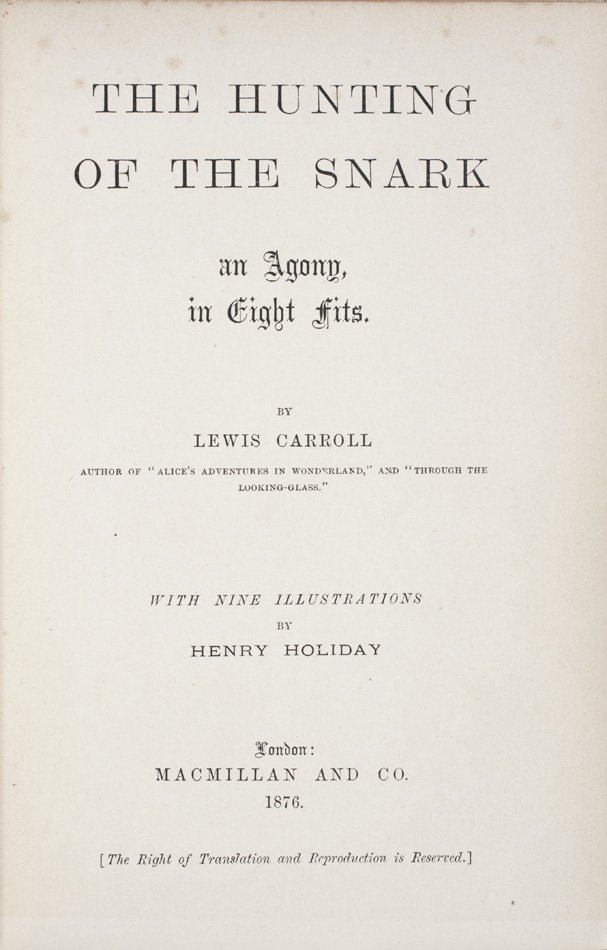
[Charles Lutwidge Dodgson (1832-1898)]
With Nine Illustrations by Henry Holiday. London: Macmillan and Co., 1876
On Loan from Deborah Wachs Barnes, Sharon Wachs Hirsch, Judith Pieprz, and Joel Wachs, AB’92
This book was first printed in an edition of 10,000 copies, in a buff cloth binding with the blocking in black. Dodgson also had a number bound in other colors for his own use in 1876. The following year he described these special bindings in a letter to Maud Standen, "I have had them bound in various coloured cloths with a ship and bell-buoy in gold: e.g. light blue, dark blue, light green, dark green, scarlet (to match Alice), and, what is perhaps prettiest of all, white, i.e. a sort of imitation vellum which looks beautiful with the gold."
Wachs No. 775
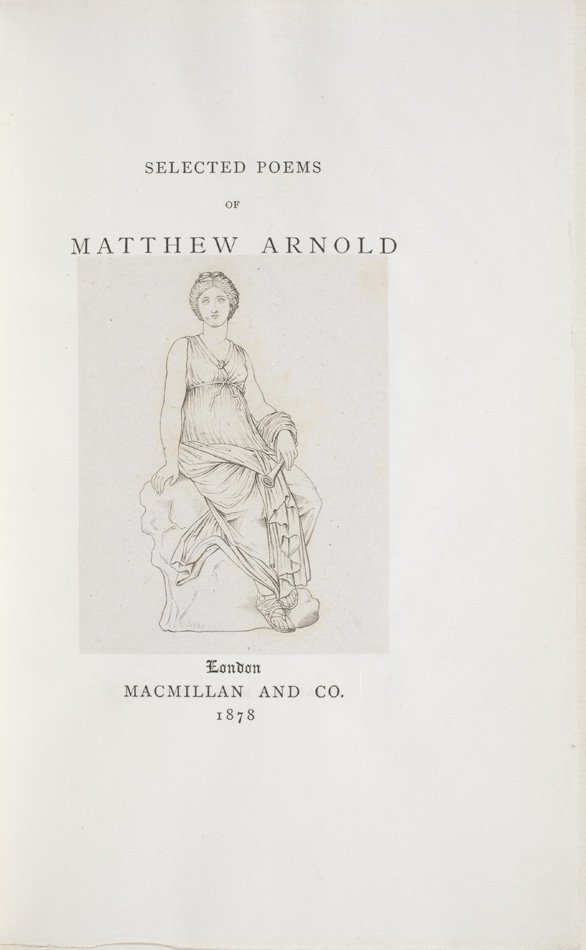
Matthew Arnold (1822-1888)
London: Macmillan and Co., 1878
Gift of Deborah Wachs Barnes, Sharon Wachs Hirsch, Judith Pieprz, and Joel Wachs, AB’92
This selection was made by Arnold himself and by this time he had long stopped writing poetry, so that the text represents his final thoughts on his own verse. Included are all his most famous poems, such as "Dover Beach," "Thyrsis," and "The Scholar Gypsy."
Wachs No. 287
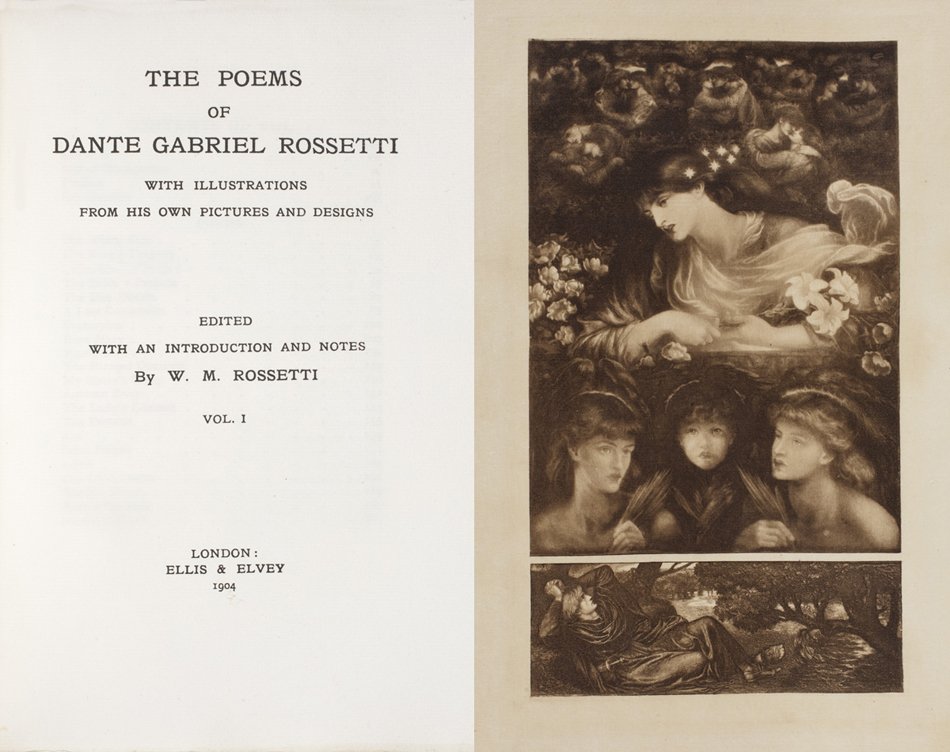
Dante Gabriel Rossetti (1828-1882)
London: Ellis and Elvey, 1904. 2 vols.
Gift of Deborah Wachs Barnes, Sharon Wachs Hirsch, Judith Pieprz, and Joel Wachs, AB’92
This edition of Dante's Poems was the first to include illustrations by him. Many poems are in this volume which was not in previous versions of the text.
Wachs No. 7
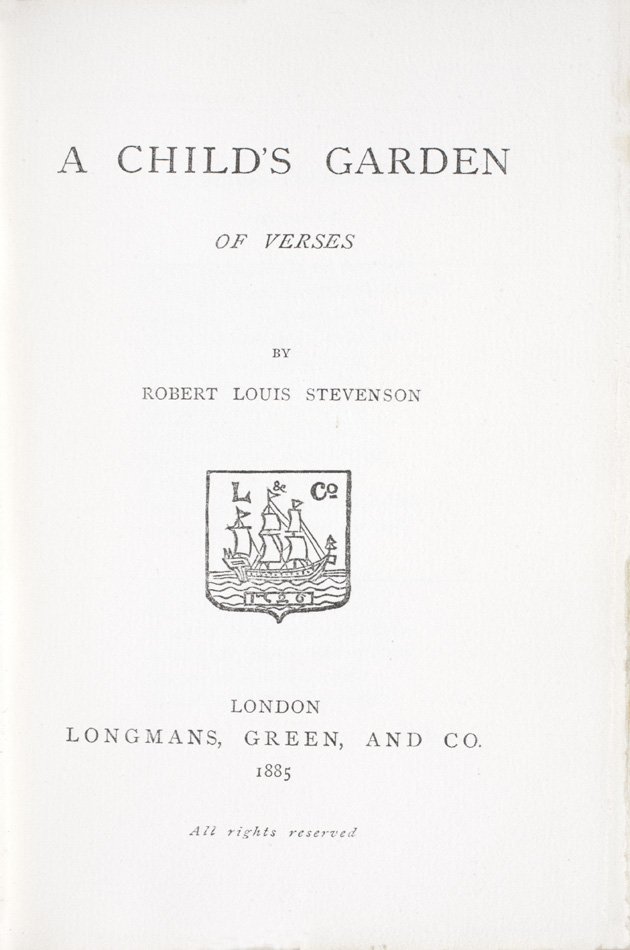
Robert Louis Stevenson (1850-1894)
London: Longmans, Green, and Co., 1885
On Loan from Deborah Wachs Barnes, Sharon Wachs Hirsch, Judith Pieprz, and Joel Wachs, AB’92
Stevenson was a literary celebrity in his own lifetime. Known today mainly as a novelist, he was also a poet and travel writer. This work is believed to be based on the author's childhood with poems such as 'My Shadow" and "The Lamplighter."
Wachs No. 247
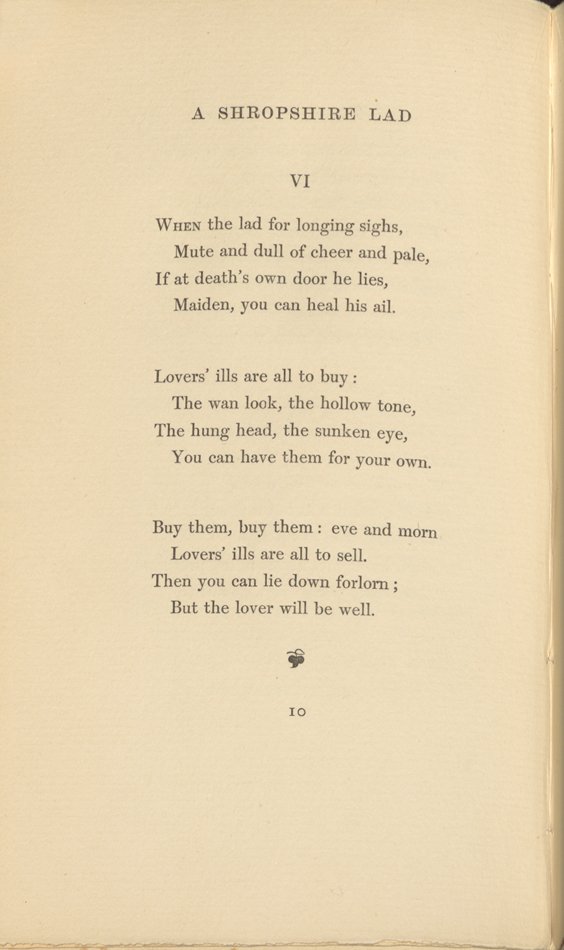
A. E. Housman (1859-1936)
London: Kegan Paul, Trench, Trübner and Co., 1896
On Loan from Deborah Wachs Barnes, Sharon Wachs Hirsch, Judith Pieprz, and Joel Wachs, AB’92
The author's first book of poetry, Houseman paid for the publication himself after it was turned down by established publishers. It is a collection of 63 poems, with some notables, "To an Athlete Dying Young" and "When I Was One-and-Twenty".
Wachs No. 351
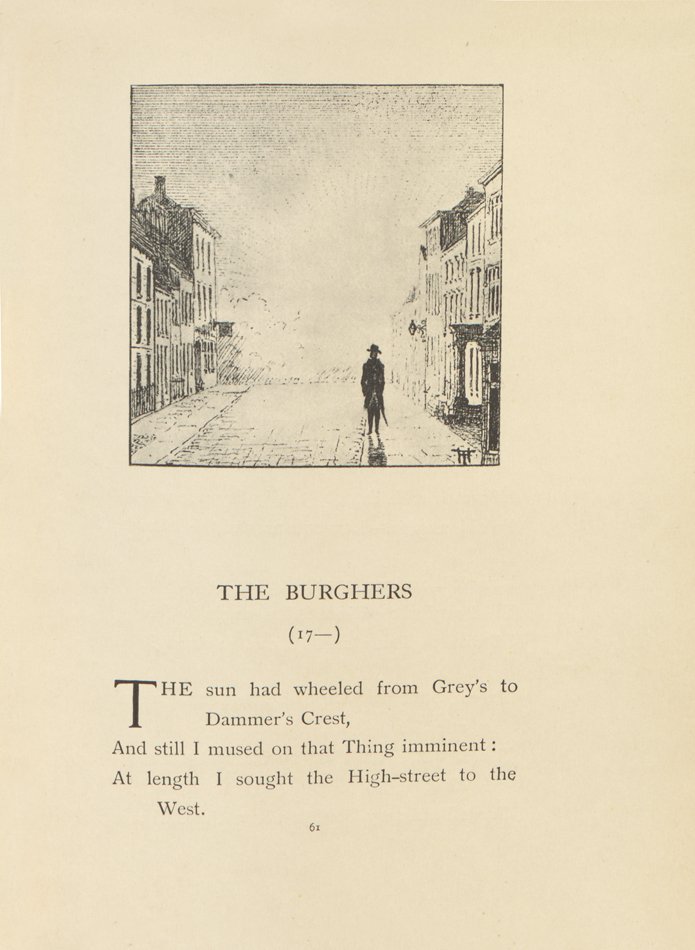
Thomas Hardy (1840-1928)
London and New York: Harper and Brothers, 1898
Gift of Deborah Wachs Barnes, Sharon Wachs Hirsch, Judith Pieprz, and Joel Wachs, AB’92
Hardy's first book of poetry with a frontispiece, 12 full-page illustrations, and 18 head and tail-pieces, all after drawings by Hardy himself.
Wachs No. 339
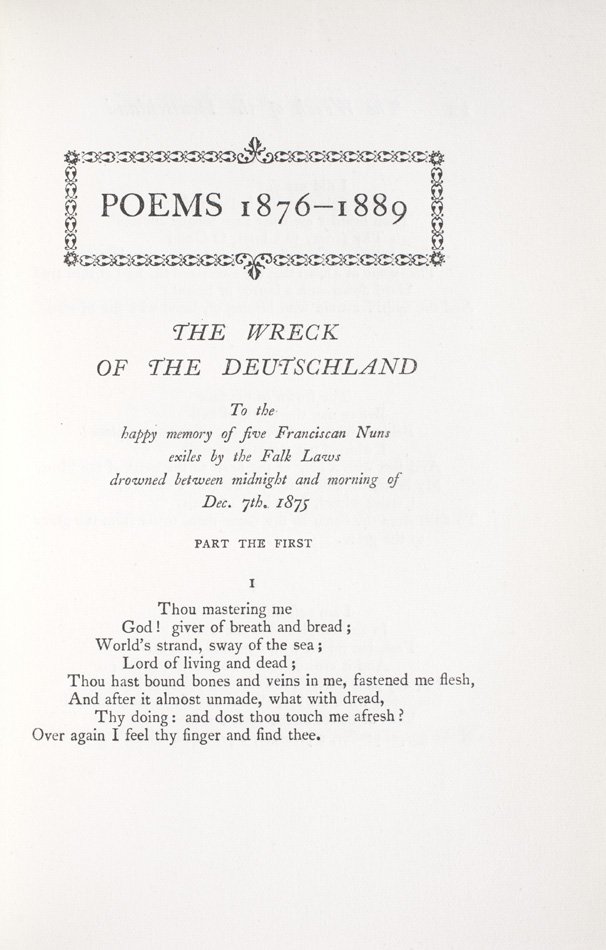
Gerard Manley Hopkins (1844-1889)
Edited with notes by Robert Bridges, Poet Laureate. London: Humphrey Milford, 1918
On Loan from Deborah Wachs Barnes, Sharon Wachs Hirsch, Judith Pieprz, and Joel Wachs, AB’92
Hopkins was a Jesuit priest whose popularity as a poet came after his death at the age of 44 in 1889. He is known now for radically changing the style of English verse in the late Victorian era. Hopkins' type of verse was known as "sprung rhythm" which was a radical departure from the conventional "running rhythm" of the time and is thought by some to be the precursor of free verse of the twentieth century.
Wachs No. 195
